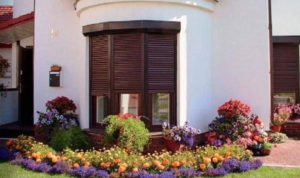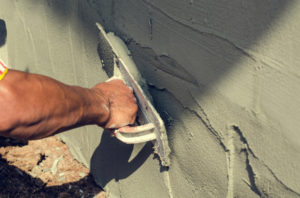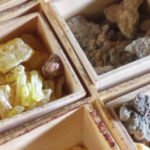Installation of solid fuel boiler-one of the most popular ways to solve the problem of heating in the house. The choice of fuel depends primarily on its availability. Because, no matter how efficient and cost — effective it may be, if you spend considerable effort and money on its delivery, it is a disadvantageous option.
In the first part of the article about the pros and cons of various types of solid fuel for boilers, I considered the most common — wood and its various technological derivatives: fuel briquettes and pellets. In this part we will focus on fossil hydrocarbons used as solid fuel for domestic boilers.
Classification of fossil solid fuels
Coal is the most energy-efficient solid fuel used in household heating appliances. Basically, the specific heat of combustion of one kilogram of coal was considered and is considered to be “conventional fuel”. This unit (“conditional fuel”) is used to calculate the calorific value of oil derivatives. The use of coal was at the heart of the civilizational leap in human society: the industrial revolution was linked to this fossil fuel.
All fossil solid fuels are distinguished and classified according to the degree of coalification — the natural process of metamorphosis of organic substances:
- peat;
- brown coal;
- coal;
- anthracite.
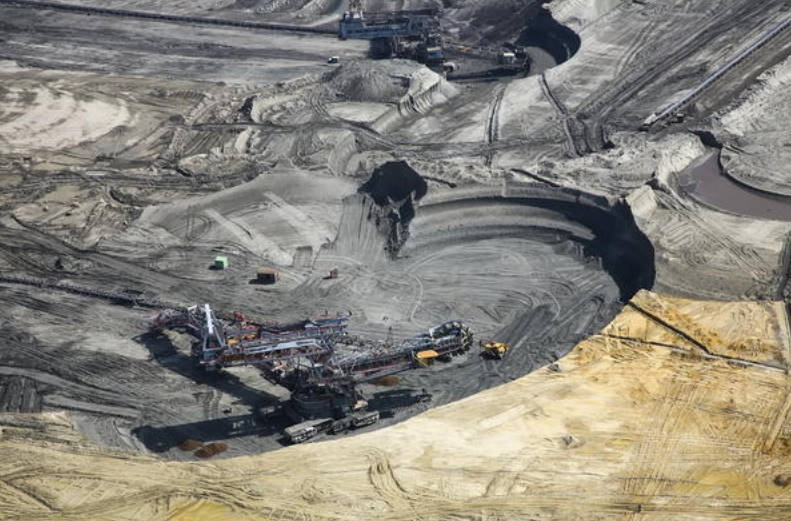
Coal cut
The degree of coalification is the geological age of the fossil. In the process of carbonification increases the amount of carbon and decreases the proportion of volatile substances: first oxygen, and at later stages — nitrogen and hydrogen. The physical characteristics of coal also change: density increases, moisture absorption capacity decreases, electrical conductivity and thermal conductivity changes. And most importantly-increases the specific heat of combustion.
Peat
Peat in its composition and geological age — the youngest education. And, in fact, it has not become coal yet: it is at the very beginning of the path of turning organic residues into coal.
Peat is the layers don’t end up decomposed in wetlands of moss and other vegetation. Over time, as a result of natural processes, the formed peat is covered with the so — called roof-soil layer. Gradually peat goes deeper, under pressure, displacing oxygen and water, and increasing temperature. The process of peat metamorphism begins in the next stage — brown coal.
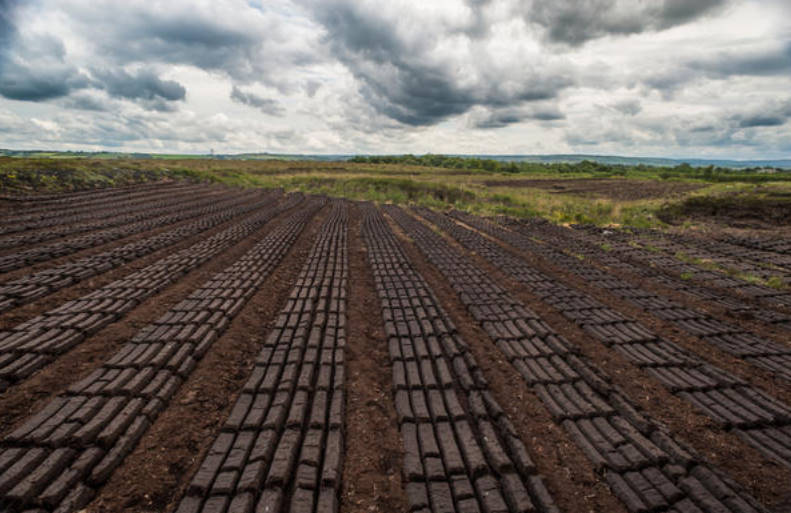
Peat processing
You have to understand that schematically describe the process of transformation of ancient peat bogs in the coal seams stretched over millions of years. But even before peat has become coal, it is already a fuel: it contains about 50% of carbon and its specific heat of combustion is from 8 to 15 MJ/kg — the same as wood. Calorific value depends on the type of peat and the amount of ballast impurities — ash content.
From the extracted peat fuel briquettes which are suitable for furnaces, fireplaces and boilers are made. By the amount of heat and the formation of ash such fuel is comparable to conventional wood and fuel briquettes from wood waste. Their cost is higher than wood, but lower than the price of fuel briquettes made of wood.
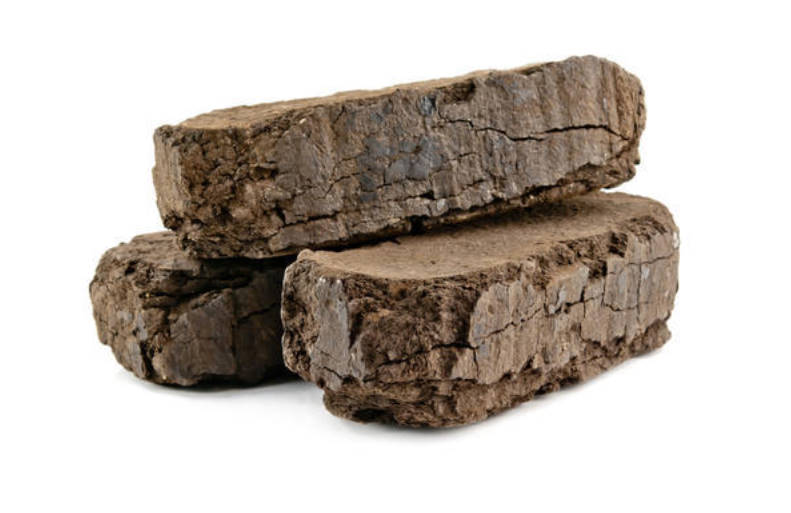
Peat fuel briquettes
Those who are planning to buy compressed peat as a fuel, it should be borne in mind that the quality of briquettes from it can be different. Some crumble, when burning emit an unpleasant smell, and after combustion leave a lot of ash. The reason for this may be the manufacturer’s bad faith and poor quality of raw materials: its technical parameters depend on the depth of peat and the place of production.
Brown coal
Brown coal belongs to the third, lower (brown) degree of coalification. Lies at a depth of about a kilometer. In the EU and England, brown coals are also called lignite. In America lignites — substances containing lignin (pulp tissue), is isolated in a separate group prior to brown coal.
Brown coal has a color from dark brown (brown) to black. Often in its structure visible plant remains, on the fracture of a piece of coal like earth or wood.
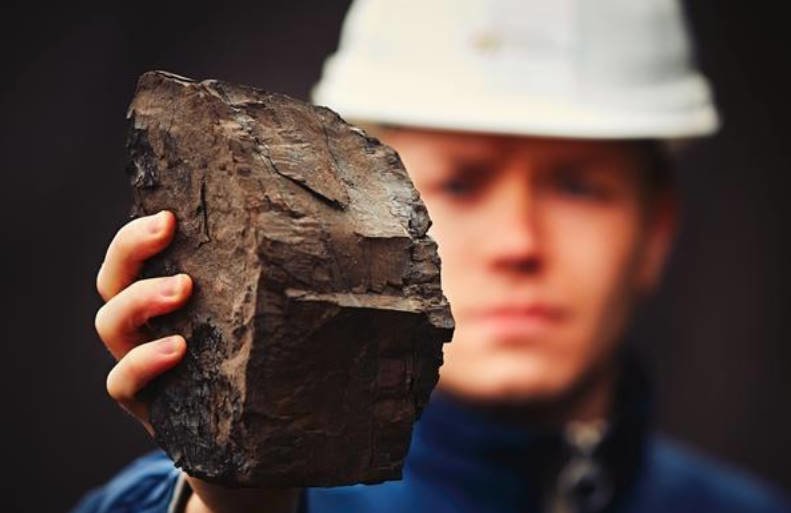
A piece of brown coal
It contains 50-70% carbon, a lot of volatile substances and water. Water and a large amount of impurities (oxygen and nitrogen) significantly reduces the calorific value of brown coal, it is about 15 MJ/kg And volatiles facilitate ignition of brown coal flammable.
The increased content of impurities and volatile substances leads to the formation of a large amount of ash during combustion — up to 40%, a Smoking flame and the deposition of soot in the chimney. Brown coal includes a lot of sulfur. Burning of this type of fuel is accompanied by the smell of burning.
In the open air, the water contained in the brown coal evaporates and the pieces crumble into powder. This is another feature that complicates the use of brown coal as a fuel: either a boiler with a special burner is needed, which allows burning dusty fuel, or pre-pressing coal dust into briquettes.

Brown coal briquettes
As fuel brown coal is used less often than stone, most often in private homes of small settlements.
Coal
Coal has been used as a fuel since ancient times. Mention of it can be found in the writings of Aristotle (IV century BC). Coal belongs to the second degree of coalification — coal. Its main reserves were formed in the Carboniferous period (Carboniferous) — about 358 million years ago.
It is quite dense breed of black or black-gray color with a characteristic charcoal Shine on a break. The degree of gloss can determine one of the qualities of solid fuel — ash, that is, the amount of ballast minerals that are not involved in combustion. The more matte surface has coal, the more impurities it contains.
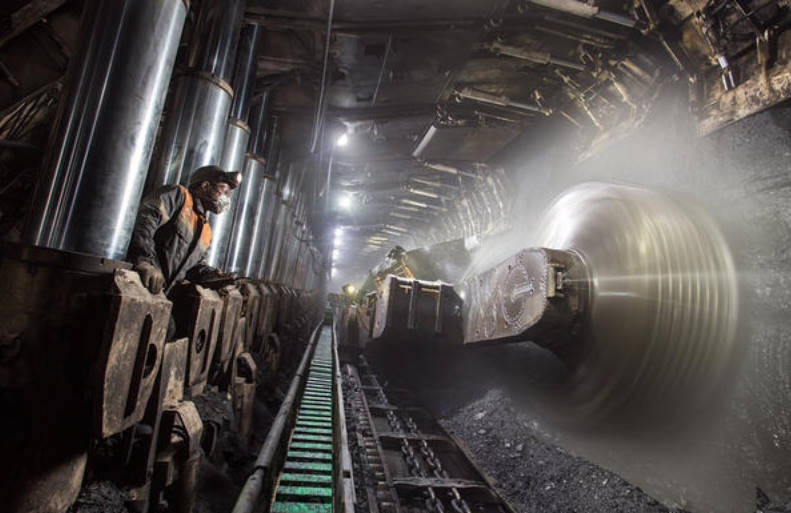
Coal mining in the mine
Coal contains from 72 to 90% carbon, which allows it to have a high specific combustion heat of 22-26 MJ/kg When burning one kilogram of such fuel to get a 6120 or 7.2 kcal/kWh.
The wide prevalence and relatively low price with high energy efficiency makes coal the most popular fuel for domestic boilers. The cost of coal depends on the brand (technical parameters and fraction).
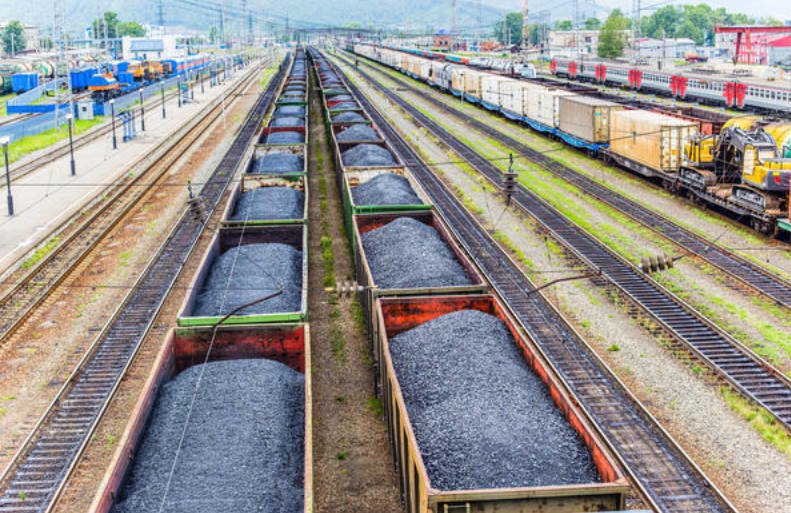
Trains with coal
Heating this type of fuel is due to some features:
- the model of the boiler;
For effective work requires a boiler adapted for the furnace is coal. Its fuel tank should be trapezoidal, and the presence of a bunker is very desirable for the organization of a continuous supply of fuel, otherwise it will have to be transformed into a Stoker several times a day. As a rule, the boilers calculated on a fire chamber by coal are more expensive than those that work on firewood.
- the dirty coal;
Coal reserves contain coal dust, which pollutes both the coal storage place, and the boiler room and the person servicing the boiler equipment.
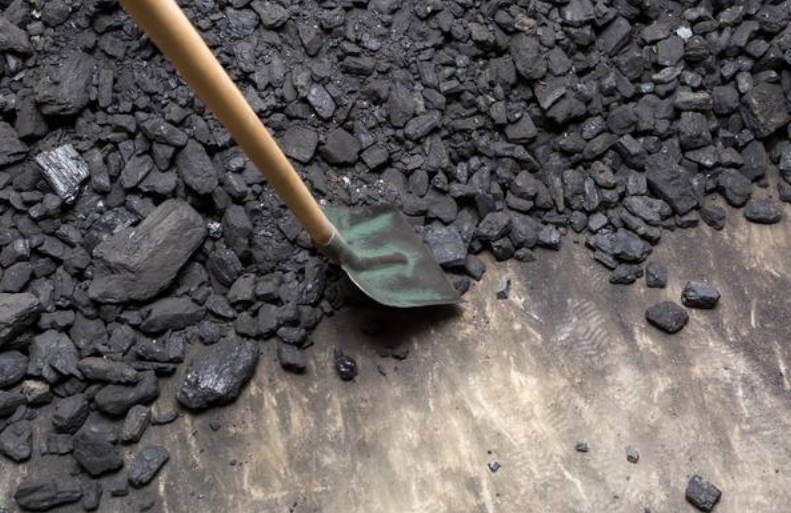
Coal
When burning coal in conventional boilers in the combustion products remains quite a lot of under-heated particles (soot). This black dust settles on the site, especially clearly seen in the winter against the white snow. Pyrolysis models of coal boilers, which have afterburning of combustion products, help to cope with this problem. Pyrolysis boilers have greater efficiency in comparison with ordinary ones, their efficiency reaches 85%.
When coal is burned, the atmosphere is polluted. In gas-generating (pyrolysis) boilers, the percentage of emissions of harmful substances into the atmosphere is lower, however, and their cost is much higher.
Heating with coal requires a well-organized system of ventilation of the boiler room. When there is a lack of oxygen during combustion, toxic substances are formed.
- storage;
The moisture absorbed in the coal, reducing its effectiveness. The degree of humidity of coal is especially important in the furnace of high-tech models of boilers, demanding the quality of fuel.
Anthracite
Coal of the highest quality-anthracite. This is the oldest fossil solid fuel-in the last stage of coalification. Most often, anthracite deposits are located in areas with high geological activity. As a result of the earth crust shifts, the arrays of this fossil fuel are buried under a very large (several kilometers) layer of soil. Anthracite contains up to 98% carbon and very little water and other impurities, including sulfur. It is thick black with a high degree of gloss.
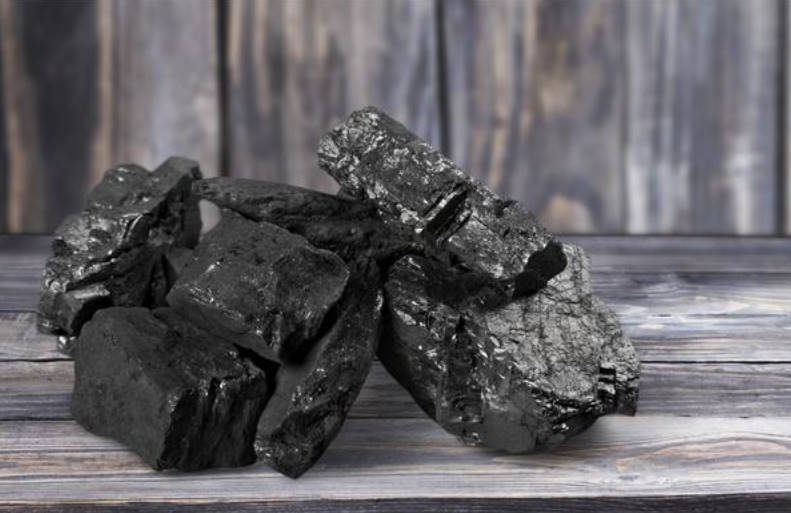
Anthracite
Anthracite has a large specific heat of combustion-30 MJ / kg, giving out when burning a kilogram of coal to 7500 kcal. This imposes special conditions on heating equipment: the internal structure of the boiler must withstand high temperatures, otherwise the metal furnace can simply melt.
Charcoal
Strictly speaking, charcoal is not a fossil fuel in the full sense. Coal this type of fuel is named for its black color. Charcoal-a product obtained by pyrolysis of wood: heating the wood to a temperature of + 400…600 degrees Celsius without access (or with limited access) of oxygen. Wood in such conditions (without oxygen) does not burn, but there is a decomposition of organic substances under the influence of temperature: dry distillation.
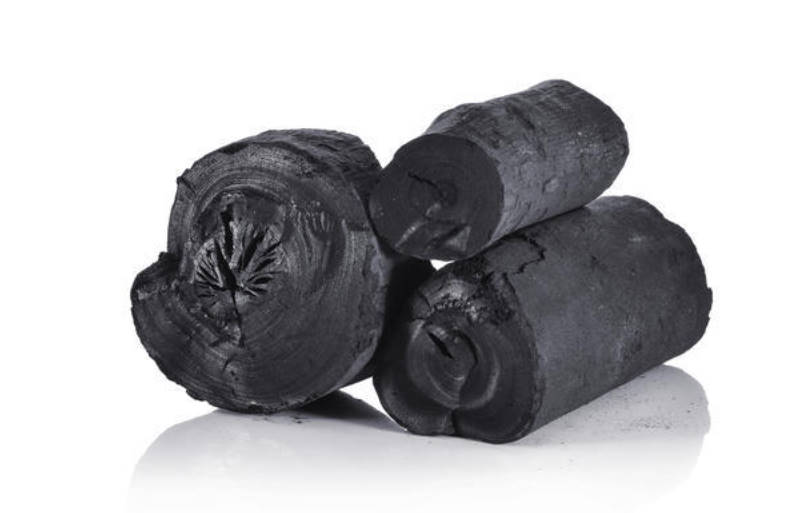
Charcoal
During the production of charcoal, the structure of the wood practically does not change: on a piece of the finished product, you can see the fibers of the tree. Porosity is preserved, because charcoal is a good adsorbent.
This coal contains a large amount of carbon, i.e. has a high calorific value: calorific value of charcoal is 31 MJ/kg. Therefore, charcoal used in the work of blacksmiths. Iron foundry at the dawn of the industrial era also worked on charcoal.
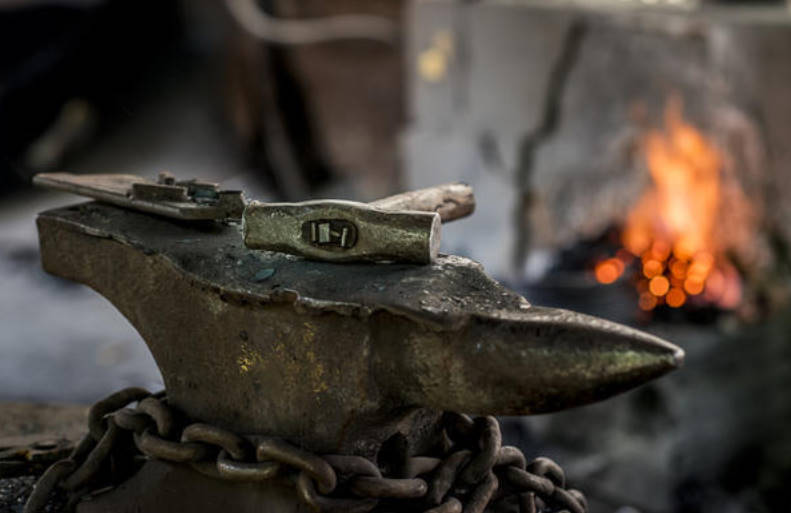
Forge
Heating with charcoal is more environmentally friendly in comparison with fossil fuels. The process of burning charcoal is similar to burning wood: there is a small amount of ash, no sulfur. The cost of such coal is commensurate with the price of coal, and therefore (because of the relatively high price) charcoal is not the most common type of fuel.
If you have the desire and the opportunity of a high-carbon fuel, you can get it on its own, exposing the pyrolysis of conventional wood. The process of obtaining charcoal does not require high-tech equipment, although, of course, today the wood is burned in special industrial furnaces.
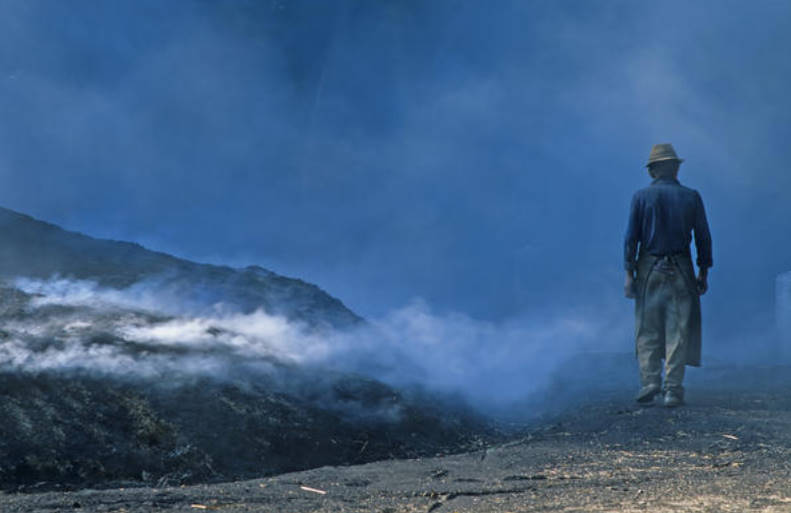
Work of the coal miner
Artisanal charcoal production is organized pit or heap: the fire gets divorced, and then laid on top of firewood to produce charcoal, and then the heap or pit with firewood is closed by a layer of earth. Inside the high temperature is maintained, but the process of active combustion is impossible. In the work of the coal breeder, in addition to the formation of the Burt, it includes monitoring to preserve limited access of oxygen to the Burt. With a large volume of wood pyrolysis combustion process can last up to several months.
I told about all types of solid fuel used in domestic boilers, considering the positive and negative sides of each of them. What to choose-depends on different reasons: availability of fuel, financial situation, model of heating equipment, attitude to environmental issues and so on.

